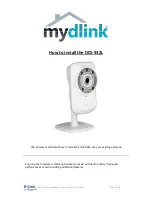
48
'N' <addr> <data> <cr>
where <addr> is 4 hex digits of offset per Table 4 and <data> is 2 to 1024 hex digits
(always a multiple of 2) of data which will be stored sequentially into the current camera
state as shown in Table 4. Actual registers affected by the command are updated as the
data comes in, except where further synchronization is required such as multibyte values
and values that change only between frames. The Control FPGA always responds with
"N" followed by a carriage-return even if the affected state is handled by the Data or DDR
FPGAs. If the baud rate is changed, the command response happens at the original baud
rate.
S
ERIAL
T
RIGGER
This command takes no arguments. This command has the same effect as pulsing the
CC1 line high for the time period between receipt of the 'O' and receipt of the carriage-
return. Although this command would normally be used only in edge-triggered mode, it
can also be used in external exposure mode for long exposures (minimum exposure is
limited by the serial baud rate). To support this mode, any characters between the "O" and
the <cr> are ignored. Thus the total command length in characters can be used to
determine the exposure time. The camera responds with "O" followed by a carriage-
return.
R
ESET AND
C
ALIBRATE
S
ENSOR
This command takes no arguments. It causes the sensor's LRST_N signal to be pulsed
low for two clock cycles. The sensor is reset and performs an auto-calibration. This
command is applied by the readout logic between frames. If enabled, the CC4 line will also
initiate this command allowing operation without the GUI. The camera responds with "P"
followed by a carriage-return.
S
END
I
NITIALIZATION
D
ATA TO
D
ATA
FPGA
This command takes any number of bytes (even number of hex digits) of FPGA
initialization data. The exact syntax of the Send Initialization Data command is:
'X' <data> <cr>
where <data> is an even number of hex digits of data which can be used for any function
required by the Data FPGA. This command is sent by the Control FPGA to the Data
FPGA upon power-on initialization and after the 'J' command (Initialize FPGA from Flash).
It is also possible for the host to issue this command via the Camera Link serial interface,
but be aware that the Data FPGA does not issue a response.
R
EADOUT
I
MAGE
















































